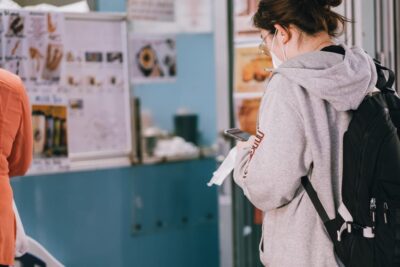Remote relationship mapping: Don’t let students go unnoticed during COVID-19
Student-Adult Relationship Mapping (download the complete guide here) enables schools to systematically ensure that every student in their building has a strong, positive connection to a teacher or staff member, and that relationships between teachers, staff, and students are deep enough that someone will know when any student needs additional support. This is critically important at any time, but perhaps matters more than ever while students are isolated and navigating the anxiety caused by COVID-19.
The steps outlined below provide a modified version of the practice originally developed by Washoe County Public Schools in Nevada. The method and questions have been adapted to make this practice applicable to the current circumstances.
Step 1: Create the map
- First, create a shared, online spreadsheet that can be accessed by all teachers, counselors, and support staff.
- Create a tab for each grade level in your school
- In Column 1 of each tab, list students in that grade alphabetically
- In the top row of columns 2 through 7, list the following questions:
Do you know this student’s name and face?
Have you had contact with this student since starting remote instruction?
Have you sent this student a personal, positive message in the past week?
Are you aware of any barriers that this student is facing while trying to participate in remote learning?
Can you name two non-academic facts about this student?
Do you know this student’s family story?
- In columns 8 and 9, ask two additional questions:
Do you believe that you are a trusted adult for this student?
Do you believe that this student is at currently at risk and in need of additional supports?
Step 2: Provide teachers and staff with a guide
It’s important that your teachers and staff understand each of the questions and can confidently respond with “yes” or “no” to each. To capture the most accurate data possible, provide the following clarification guide:
Do you know this student’s name and face?
Can you picture this student? Are you confident that you can pronounce their name correctly?
Have you had contact with this student since we started remote learning?
Is this student participating in their online classes, check-ins, and appointments? Have they asked questions during a Zoom class, written in a chat box, or sent you a personal email?
Have you sent this student a personal, positive message in the past week?
Have you reached out to this student directly to share positive feedback on a piece of work, to praise a class contribution, or simply to check in and say hello?
Are you aware of any barriers that this student is facing while trying to participate in remote learning?
What daily barriers might this student be facing while trying to learn from home? Do they lack access to stable Wi-Fi? Are they sharing a laptop with siblings? Do they struggle to stay on task but do not receive re-direction at home?
Can you name two non-academic facts about this student?
What hobbies might they be missing during this period? What do they like to chat about beyond schoolwork? Who are their closest friends?
Do you know this student’s family story?
Are you aware of this student’s current situation at home? Are they living in a multi-generational home,or with a single parent and multiple siblings? Do they have a sick family member? Are there factors at home likely to create an unusually stressful environment for this student?
Step 3: Gather “yes” responses
Ask all teachers and staff to simply add an “x” to the spreadsheet in the appropriate cell each time they can confidently answer “Yes” to each question for a particular student. Respondents should not provide written answers to the questions; gathering necessary information can happen more discretely in follow-up.
Step 4: Identify students who are going unseen
Students who have strong relationships with adults in their building are likely to have several “x’s in their rows and are more likely to reach out proactively when working from home. But there will also be students whose rows are largely blank. When “normal” school is in session, adults can pick up on changes in body language among those students. However, a remote learning environment makes impromptu observations and interactions less likely and significantly increases the chance that those students will simply go unnoticed over the coming weeks. Look for those students with the fewest “x’s to identify those at the greatest risk of feeling disconnected, and then establish a plan to initiate contact and build positive relationships with them as quickly as possible.
Step 5: Make plans to connect
For those with fewer connections, start by identifying any classes, school sports teams, performing arts groups etc. that a student participates in by choice. Ask those teachers to reach out with a personal note, or to provide positive feedback on a piece of work. For those with no connections, develop a formal plan to establish a connection, engage the student in interactions, and build new relationships from the ground up.
COVID-19 has contributed to heightened levels of anxiety, reduced motivation, sudden changes in daily routine, and extended periods of isolation for the vast majority of the population. To minimize the impact of these factors on student achievement and mental health, schools must strive to ensure that every student is connected with a trusted adult. Remote Relationship Mapping provides schools with a systematic approach for achieving that goal.

More Blogs

5 ways to support school communities experiencing pandemic-related grief

Staying connected with students during COVID-19: practical guidance for teachers
